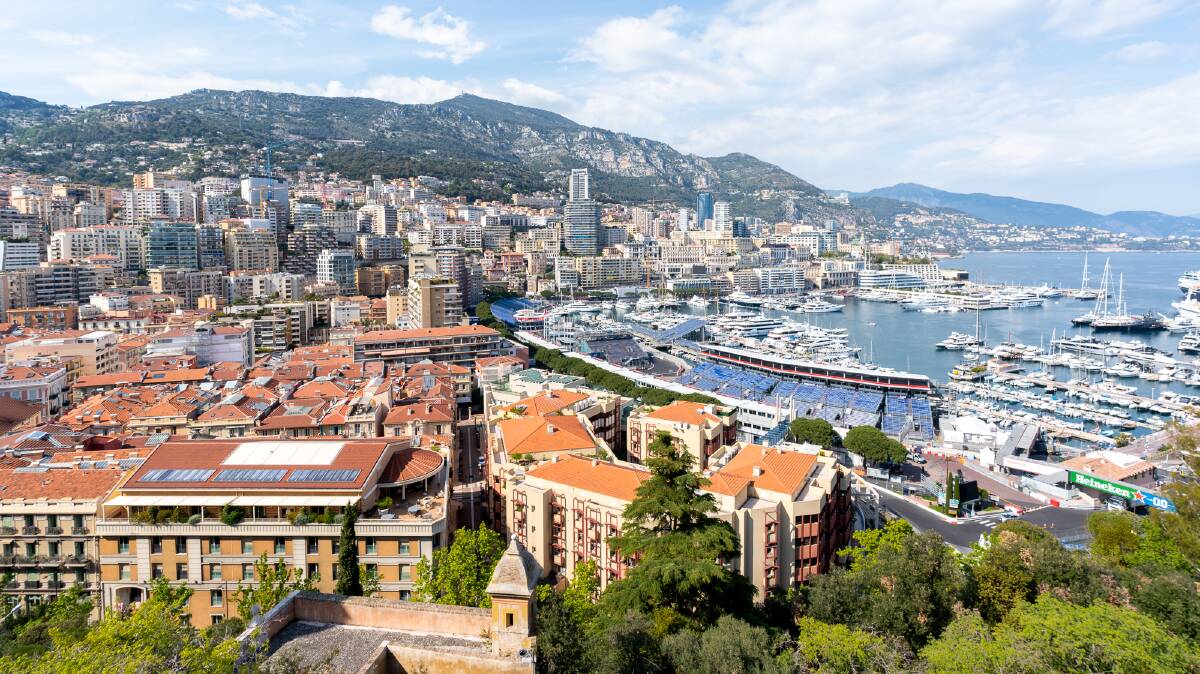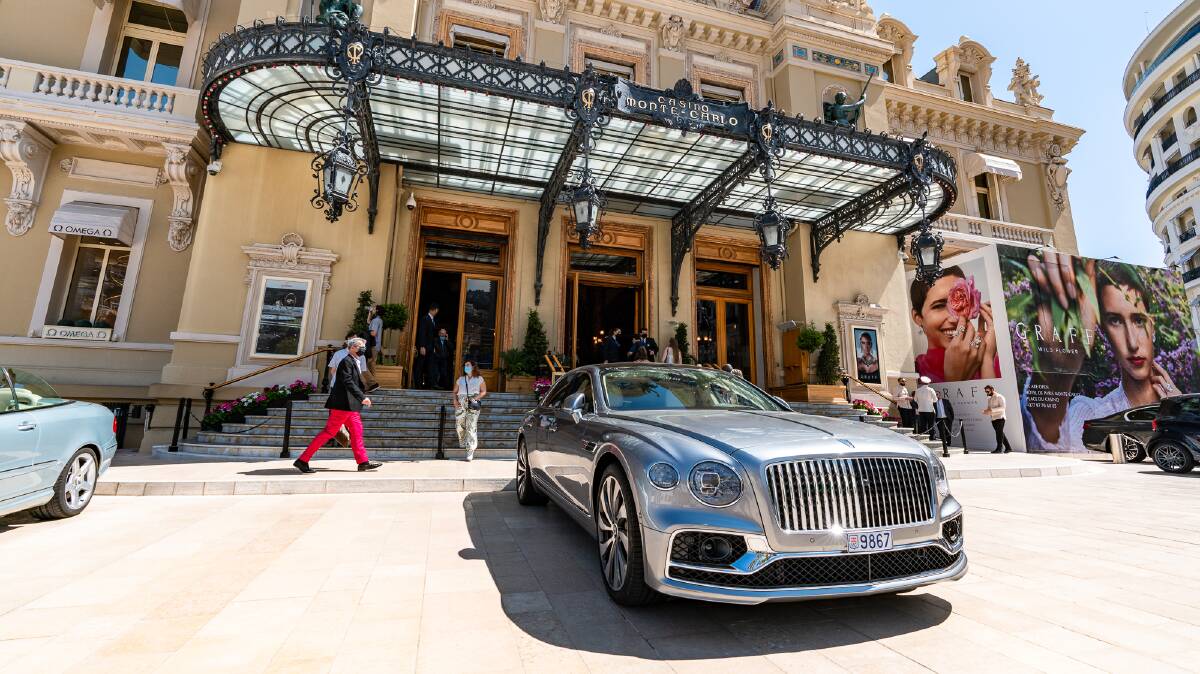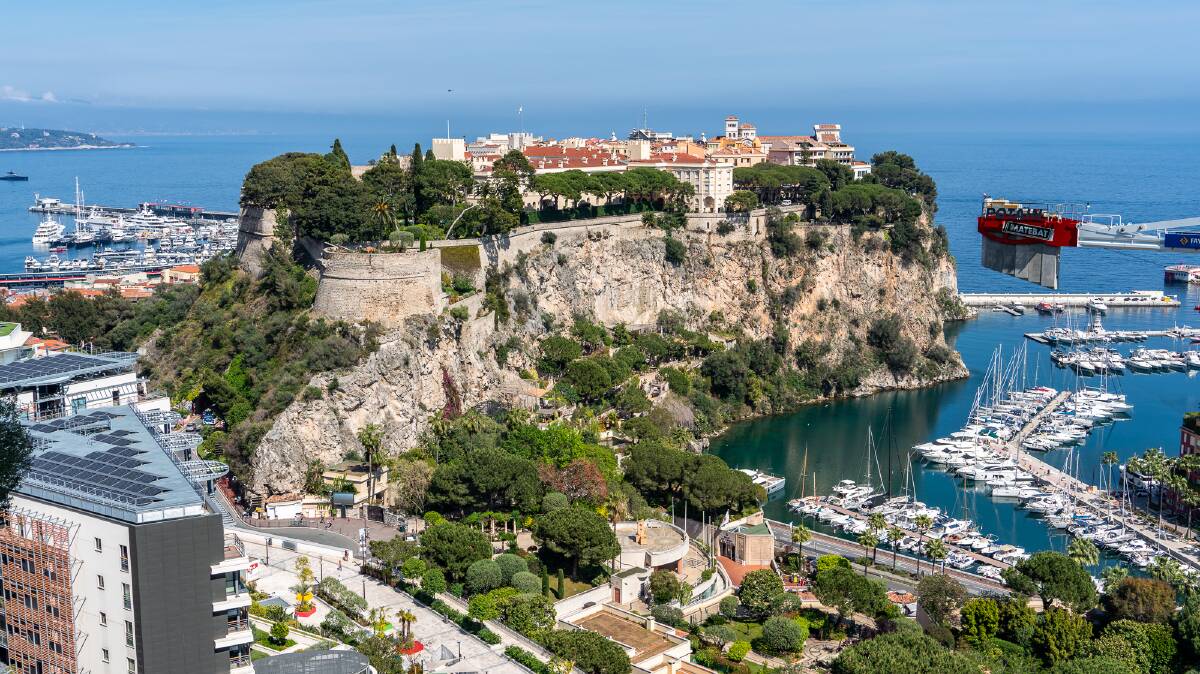
It takes less than a day in Monaco until I bump into the country's most famous resident - its monarch, Prince Albert II. Although ... when I say "bump into", I mean that he rides past me in his motorcade while I'm standing on the footpath a few hundred metres from his palace. Still, it's not every day that I see a head of state in person (even if it's through a car window)!
Subscribe now for unlimited access.
or signup to continue reading
But, of course, unusual things are bound to happen in Monaco, because this is no normal country. The second smallest in the world (behind Vatican City), it has about 40,000 people living in an area half the size of Canberra's Parliamentary Triangle. Famous as a romping ground for the rich and famous - with fast cars, superyachts, and private rooms in the casino - it can sometimes feel as though you're in a James Bond spin-off ... if 007 constantly got lost and had to pull out his phone to look at Google Maps, that is.

Because, you see, the glitz of Monte Carlo is where many of these luxury trappings are found, but it's just one aspect of one neighbourhood of Monaco. There are many other aspects here, so I'm walking the streets to discover them. And one of the first things I find is that, with Monaco built along a steep hillside, the streets often lead to outdoor escalators, into tunnels through the ground, and to public elevators that whisk you between roads in seconds. At times I wonder if I'm just in an enormous shopping mall.

To go back to the start, I head to the old town of Monaco, the historic precinct perched atop a 60-metre-high rocky hill with the Prince's Palace overlooking the water at one end. Once a 13th century fortress, the palace has been renovated over the years into a luxurious residence that you can visit during summer months. Fanning out from it are narrow streets lined with shops and restaurants that lead to other landmarks like the Monaco Cathedral (beautiful as a whole, but often known just for the tomb of Grace Kelly), and the Oceanographic Museum.

If there's one attraction here that captures the essence of Monaco as a country, it's the Oceanographic Museum, a monumental building founded in 1910 by then-monarch Prince Albert I who was a keen oceanographer. The fact the museum exists at all shows the power a ruler of a small wealthy country has to just create their own impressive institution, complete with a floor filled with tanks of colourful and quirky marine life. But what is particularly impressive is that the museum has played a leading role in the protection of the world's oceans for more than a century, demonstrating Monaco's political clout is much greater than its size.
MORE TURTLE TRAVEL:
Speaking of size, Monaco is bigger than it used to be, with the neighbourhood of Fontvieille, at the bottom of one side of the old town, developed on reclaimed land. It's here that I find a casual local neighbourhood with restaurants and bars along the waterfront. The Hotel Columbus (my home for this trip) is located in Fontvieille and each time I step outside I'm greeted by nearby residents (of the non-royal variety) walking their dogs. From my room, I have a gorgeous view out across the bouquet of colours in the Princess Grace Rose Garden.
Not far away, up a couple of flights of escalators (of course), a series of museums remind me that things are a bit surreal here - there's the collection of hundreds of model ships that an influential citizen put together over his lifetime; one dedicated to all the stamps and currency that Monaco has used over the centuries; and one housing five levels of vintage cars collected by Prince Rainier III (the current monarch's father).

Fast cars and motorsports are part of Monaco's DNA these days and have been since the first Grand Prix was held here in 1929. In fact, as I try to walk towards Monte Carlo, I end up trapped behind the fencing that's been erected for Grand Prix season. The main Formula One Grand Prix will be held next weekend, but the track and stadium-style seating is up for a month this year because of two other events, including the Formula E ePrix last weekend, with electric cars racing the traditional track.

I eventually find my way past the fencing (by using a couple of tunnels, of course) and into the exquisite Japanese Garden, a sanctuary of Zen created at the request of Prince Rainier III. It's one of many gardens throughout the country, which has compensated for its lack of natural landscapes with a string of planted green pockets. As I explore the streets, it's interesting to note how, even with high rises everywhere, nothing ever feels overdeveloped or too urban.

A large part of this is due to the emphasis Monaco's rulers have put on the environment over the generations, from the establishment of the Oceanographic Museum, to the creation of the parks, and the embrace of the ePrix (and Prince Albert II's much publicised penchant for driving electric vehicles).
Is this a side of Monaco that visitors don't always see? Perhaps. It's certainly one that's easy to miss when you come only as a day trip, just as it's easy to miss the local neighbourhoods, the quirks beyond Monte Carlo, and the heights of the heritage. I may not be able to associate with the wealth of Monaco, but I think I found its richness.

Michael Turtle was a guest of Visit Monaco. You can see more things to do in Monaco on his Time Travel Turtle website.


